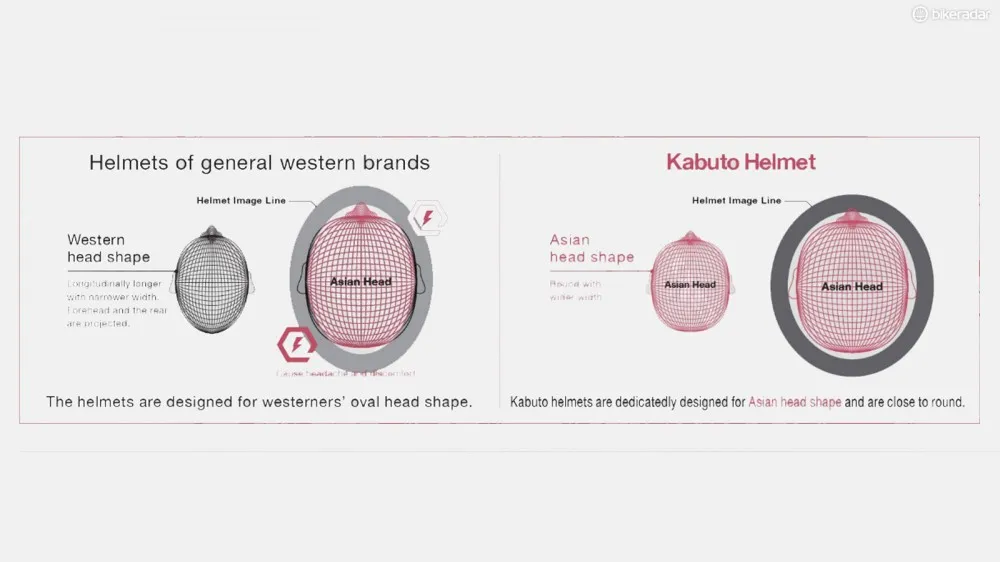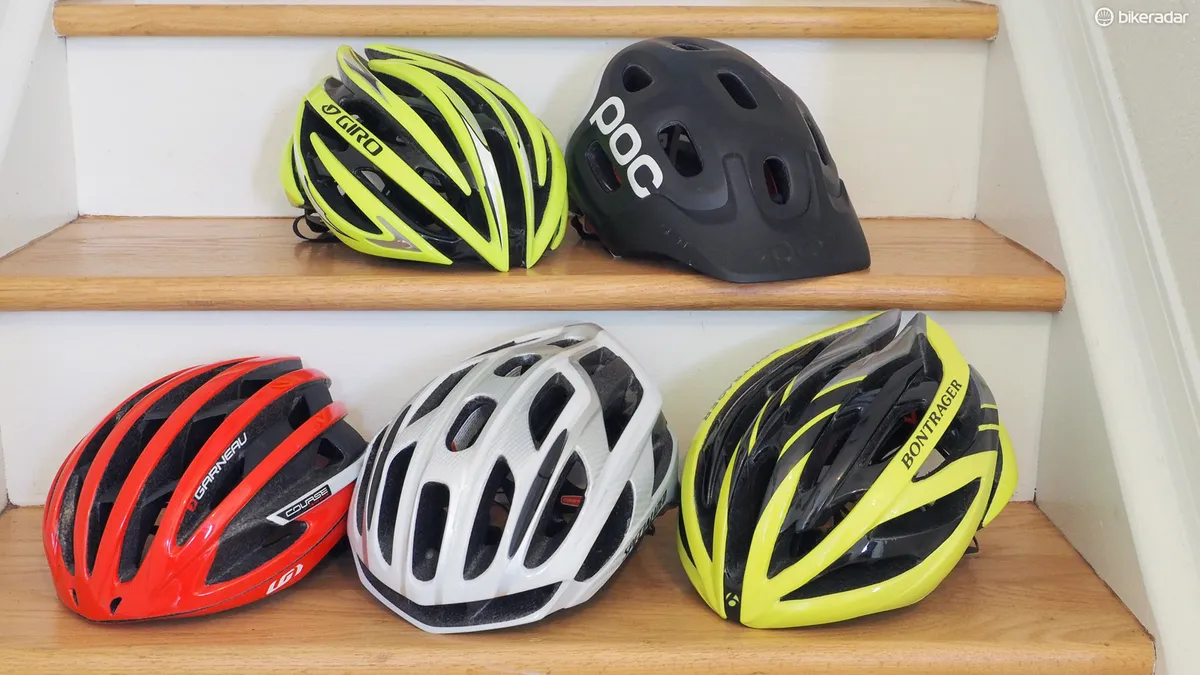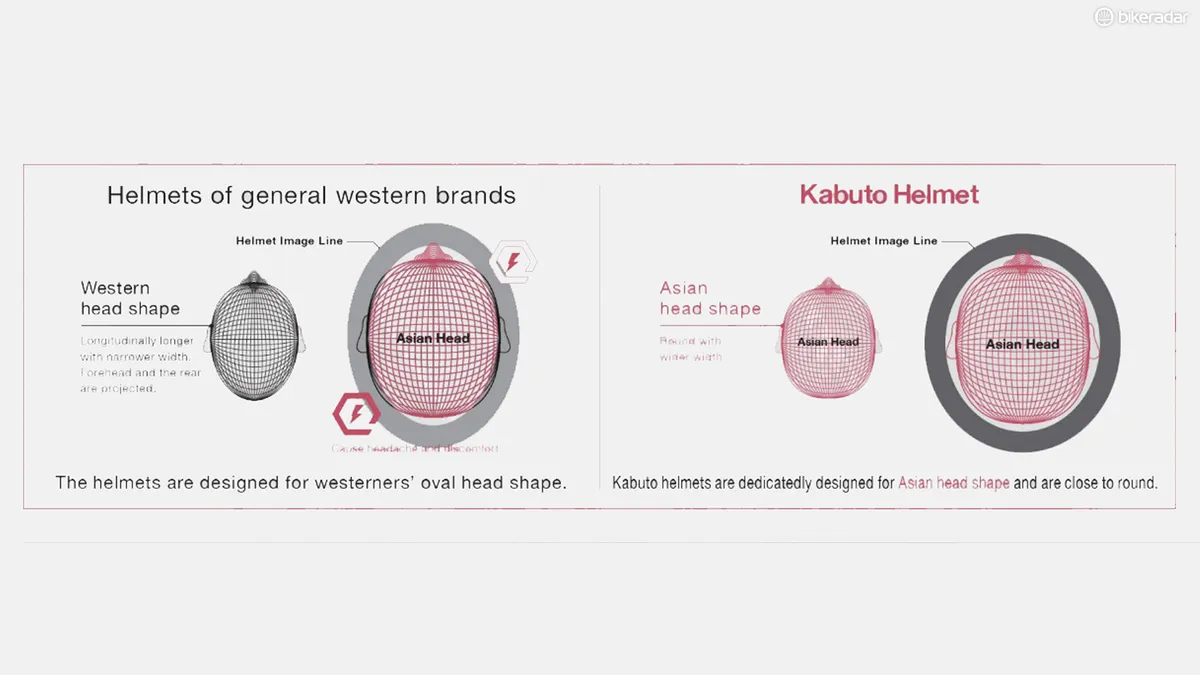Have you shopped for a new helmet recently? If so, there's no need to point out that one company's so-called 'medium' doesn't necessarily feel the same as a medium from another brand, yet they both have the same size label. I don't know about you, but I think that seems kind of silly – but there's an easy way to fix the issue.
For the most part, the conventional three-shell (or unfortunately, sometimes just two) system of helmet sizing seems to work reasonably well, especially in conjunction with modern retention devices. Giro's new Synthe, for example, covers a rather wide head circumference range from 51 to 63cm.
That said, retention systems can only do so much and while it's nice that companies typically pair their sizing labels with numerical values, those numbers don't tell you anything about how the helmets are shaped. One person's 60cm noggin might seem perfectly at home in a bowling alley, for example, while another rider's 60cm skull might look like something dreamed up by HR Giger – yet, by most helmet companies' sizing schemes, they'd both fit into a large.

These helmets are all labeled size 'small' but they all fit differently – and judging by the boxes they come in, you'd have no idea how
Several months ago, I stumbled upon the web site of Japanese helmet company Kabuto, whose helmets are claimed to better fit the typically rounder-shaped heads of Asian riders. I apparently don't fit that stereotype myself but all the same, it's the first time I'd seen a company specifically draw attention to the shape of its helmets – and if Kabuto hadn't outlined this trait explicitly, potential buyers would be just as in the dark about these might fit as with any other company.
Let's perhaps try this, then: along with the numerical circumference range for each helmet size, how about companies also include a metric that describes the relative interior length and width of those sizes?
Looking at a few examples illustrates the idea well:
Helmet
Size
Measured length
Measured width
Length-to-width ratio
Bontrager Velocis
S, 51-57cm
212mm
160mm
1.325
Giro Aeon
S, 51-55cm
202mm
162mm
1.247
Louis Garneau Course
S, 52-56cm
207mm
164mm
1.262
POC Trabec
S, 51-54cm
207mm
163mm
1.270
Specialized Propero II
S, 51-57cm
213mm
163mm
1.307
Array
All of these helmets are size 'small' with very similar circumference ranges, yet they fit quite differently, as the calculated length-to-width ratios illustrate. Out of these four examples, the Giro uses the roundest headform, followed closely by the Louis Garneau and POC. Both the Bontrager and Specialized, on the other hand, are notably more oval and given my rather oblong noggin, it's no surprise then which of these fits me best (sorry, I didn't have a Kabuto on hand).

Head circumference only tells part of the story
Without this sort of info, I'd essentially be guessing as to which shell would most closely approximate the shape of my skull – as would anyone else who might be in the market for a new helmet. This information would most obviously benefit someone shopping over the internet but even brick-and-mortar customers might at least like to be able to narrow down which helmet brands will work best before driving all over town.
I don't have the data to say that a better-fitting helmet would protect you better than one that doesn't fit as well (although it seems intuitive that the former case is preferable). However, I do know that I'm happier in a helmet that feels more like it inherently fits my head than in one that has to be adapted to work, and I'd rather not go through a big trial-and-error process to get there.

